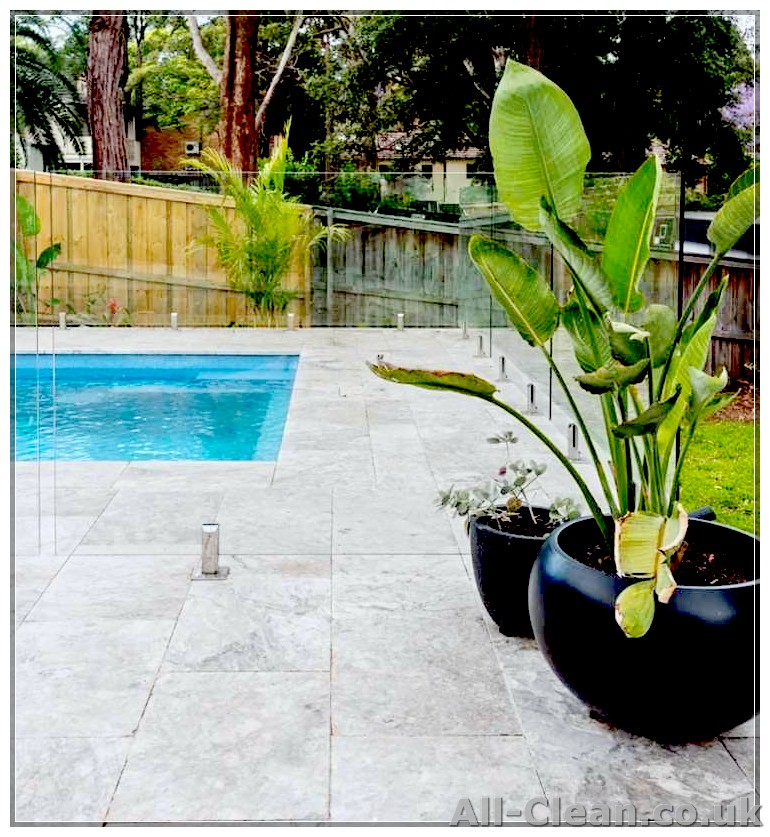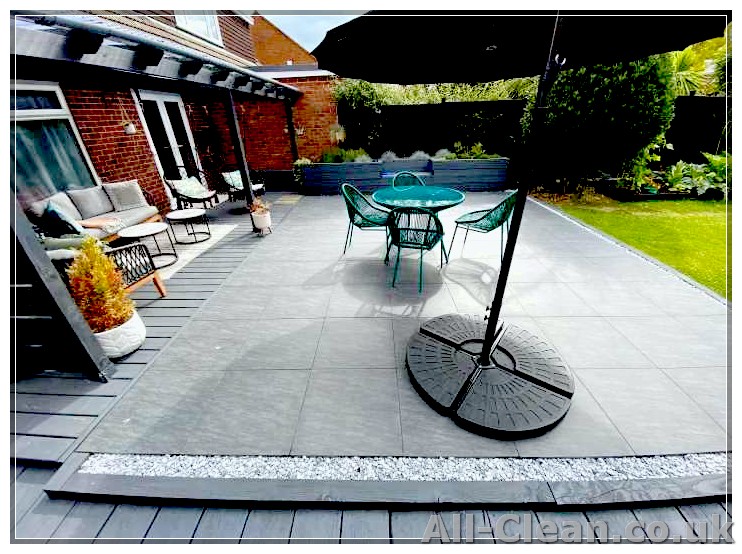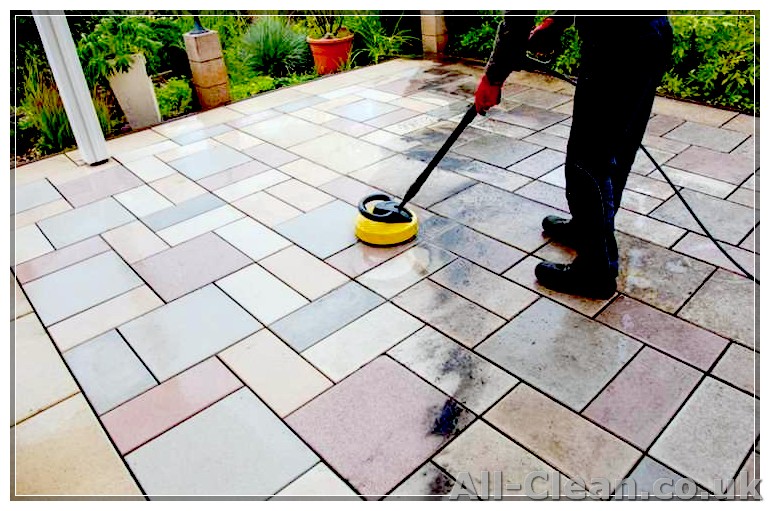
If you have porcelain tiles in your garden or on your patio, you know that they can quickly become dirty and stained. Over time, dirt, grime, and even moss or mildew can build up on the tiles, making them look dull and discolored. But don’t worry – with the right cleaning techniques, you can easily restore their appearance and keep them looking good as new!
When it comes to cleaning outdoor porcelain tiles, the first step is to sweep away any loose dirt or debris. A broom or a gentle brush is suitable for this task. By removing the loose dirt, you’ll ensure that the cleaning solution can penetrate more effectively and remove deep-seated stains.
Next, you’ll need to choose a suitable cleaner for your porcelain tiles. Harsh cleaners or abrasive solutions should be avoided, as they can scratch or damage the tiles. Instead, opt for a mild detergent or a specialized porcelain tile cleaner. These cleaners are designed to clean porcelain tiles without causing any harm.
Once you’ve chosen the right cleaner, it’s time to apply it to the tiles. You can use a sponge, a soft cloth, or a mop for this step. Apply the cleaner to the tiles, focusing on any areas with stains or discoloration. Allow the cleaner to sit for a few minutes to penetrate the grime thoroughly.
After the cleaner has had some time to work its magic, grab a scrub brush or a long-handled brush and start scrubbing the tiles. Pay extra attention to any cracks or joints between the tiles, as they are likely to have more dirt and grime. Be sure to scrub gently to avoid scratching the tiles.
Once you’ve finished scrubbing, it’s time to rinse away the cleaner. You can use a jetwash or simply a hose with a high-pressure nozzle. Start at one end of the tiles and work your way across, ensuring that all the cleaner and dirt are washed away. Make sure to use a sweeping motion to avoid any streaks or water spots.
If there are any stubborn stains that don’t come off with the cleaner, you may need to try a more potent solution. Oxidizing cleaners or bleach can be effective in removing tough stains, but be sure to follow the instructions carefully and test the solution in a small, inconspicuous area first to avoid any damage.
Finally, when the tiles are clean, the last step is to dry them thoroughly. You can use a soft cloth or let them air dry. Be sure to check that there are no remaining streaks or water spots. If you notice any, go over the tiles again with a clean and dry cloth until they are completely dry and spotless.
By following these simple steps, you can keep your outdoor porcelain tiles looking as good as new for a long time. Regular maintenance and cleaning will not only keep the tiles in pristine condition but also prolong their lifespan. So, click here to find the perfect cleaner for your tiles and get started on the road to a clean and beautiful outdoor space!
Gather the necessary materials

Before you start cleaning your outdoor porcelain tiles, it’s important to gather all the necessary materials. This will ensure that you have everything you need to effectively clean and maintain your tiles. Here is a list of the materials you will need:
- Tiles cleaners: Choose a suitable cleaner that is specifically designed for outdoor porcelain tiles. Avoid using harsh chemicals or cleaners that can damage the surface of the tiles.
- Sweep or brush: Before you begin cleaning, sweep or brush the tiles to remove any loose dirt or debris.
- Water: You will need water to mix with the cleaners and to rinse off the tiles after cleaning.
- Sponge or soft cloth: Use a sponge or soft cloth to apply the cleaning solution to the tiles and to gently scrub away any dirt or stains.
- Pressure washer (optional): If your tiles are particularly dirty or have tough stains, you may want to consider using a pressure washer. However, be cautious as high-pressure settings or using the pressure washer too close to the tiles can cause damage.
- Grout cleaner (if applicable): If your tiles have grouting between them, you may need a grout cleaner to remove any dirt or grime from the grouting.
- Protective gear: To protect yourself during the cleaning process, it is recommended to wear gloves and safety glasses.
By gathering all the necessary materials before you begin cleaning, you’ll save time and have everything you need to ensure a thorough and effective clean for your outdoor porcelain tiles.
Sweep or vacuum the tiles
Before you start any cleaning or maintenance on your outdoor porcelain tiles, it’s important to remove any loose dirt, leaves, or other debris that may be sitting on the surface. Sweep the tiles with a broom or use a vacuum cleaner with a hard floor setting to gently remove any loose dirt and dust.
Leaving dirt and debris on the tiles can cause scratches and damage to the surface when you come to clean them. So, it’s important to ensure that the tiles are free from any loose dirt before you start the cleaning process.
If there are any stubborn stains or grime on the tiles that cannot be removed through sweeping or vacuuming, you may need to use more targeted cleaning solutions or methods to get them clean. This will depend on the specific type of stain or grime that you’re dealing with and the porosity of the tiles.
It’s worth noting that porcelain tiles are generally more resistant to staining and are easier to clean compared to other materials like natural stone or wood. However, they still require regular cleaning and maintenance to keep their appearance looking good and prevent any long-term damage.
In general, when it comes to cleaning outdoor porcelain tiles, it’s best to avoid using harsh cleaners or abrasive materials that could potentially damage the surface of the tiles. Stick to gentle cleaning solutions and methods to avoid any potential issues.
Prepare a cleaning solution
Before you begin cleaning your outdoor porcelain tiles, it is important to prepare a suitable cleaning solution. Here are some steps to follow:
- Gather your materials: Before you start, make sure you have all the necessary materials for preparing the cleaning solution. These may include a bucket, warm water, a mop or a sturdy brush, and a mild detergent or a specialized porcelain cleaner.
- Mix the solution: Fill the bucket with warm water. Add a small amount of mild detergent or a specialized porcelain cleaner to the water. Follow the instructions on the cleaner’s label for the correct ratio of water to cleaner.
- Stir the solution: Mix the water and detergent or cleaner together until they are well combined. This will create a soapy solution that will effectively clean the porcelain tiles.
Once you have prepared the cleaning solution, you will be ready to move on to the next step of the cleaning process. It is important to use a suitable cleaning solution as using harsh or abrasive cleaners could damage the porcelain tiles. Additionally, using the correct ratio of water to cleaner will ensure that the solution is effective in removing dirt, stains, and grime from the tiles.
Apply the cleaning solution to the tiles

Once you have prepared the cleaning solution, it’s time to apply it to the outdoor porcelain tiles. The porosity of your tiles will determine how much you need to apply.
If your tiles are non-porous or have been sealed, you can apply the cleaning solution directly onto the surface. However, if your tiles are porous, the solution may need a little extra time to penetrate and remove any tough stains or grime.
In cold weather, it’s best to apply the cleaning solution on a warm day when the tiles are not freezing cold. This will help prevent any potential damage to the tiles.
When applying the cleaning solution, make sure to wear gloves and protective clothing to avoid any potential skin irritation. Start by pouring the solution onto the surface of the tiles and use a soft-bristle brush or mop to spread it evenly.
If you have cracks in your tiles, be careful not to let too much of the cleaning solution seep into them, as this can cause the tiles to crack further over time. Instead, apply the solution more lightly to these areas.
Keep in mind that if your tiles are newly installed, you should follow the manufacturer’s recommendations for the cleaning solution application. Some tiles may need to be primed before applying any cleaning products.
After applying the cleaning solution, let it sit on the tiles for a few minutes to allow it to loosen any dirt or grime. This will make it easier to remove during the washing process.
If you still have stubborn stains or grime after washing, don’t worry. There are other cleaning solutions available that are specifically designed to tackle difficult stains. Click here for more information on those solutions.
It’s important to thoroughly wash the tiles to ensure that all the cleaning solution and dirt are removed. Use a pressure washer or garden hose with a high-pressure nozzle to blast away any remaining dirt or grime.
Remember to always wash the tiles from the top down to prevent dirty water from dripping onto already cleaned areas. This way, you won’t have to go back and re-clean any sections that have been contaminated.
If you notice any haziness or residue on the tiles after washing, it could be due to the cleaning solution not being rinsed off completely. In this case, simply rinse the tiles again to remove the haze.
Once you’ve finished washing the tiles, allow them to dry completely before walking or placing any furniture or barbecue equipment on them. If the tiles are still wet, it can cause staining or discolouration.
Water is likely to pool on the tiles if they are not properly sealed, so be sure to check for any areas that need sealing. If you notice any cracks or signs of wear, you may need to have your tiles resealed to prevent water damage.
By following these steps, you’ll be able to keep your outdoor porcelain tiles looking clean and new for years to come.
Scrub the tiles
Once you have prepared the cleaning solution and rinsed the tiles, it’s time to start scrubbing. Scrubbing the tiles will help remove any stubborn stains, dirt, or grime that may still be lingering. This step is especially important if the tiles have not been cleaned for a long time or if they have been exposed to harsh weather conditions.
To scrub the tiles, you will need a scrub brush or a long-handled scrubber wand. Make sure to choose a brush or wand with bristles that are not too harsh, as this could damage the tiles. Start by wetting the brush or wand with clean water, then dip it into the cleaning solution.
- Begin scrubbing the tiles using circular motions. Apply gentle pressure while scrubbing and focus on areas that have tough stains or grouting.
- If you have difficulty reaching certain areas, you can use a smaller brush or an old toothbrush to get into tight corners or around the edges of the tiles.
- Pay extra attention to any wood or composite decking that may be adjacent to the porcelain tiles. These areas may require more care and a different cleaning solution, as wood can be more porous and prone to damage.
- If you are using a pressure washer, keep the wand at a low pressure setting to avoid damaging the tiles. Higher pressures can cause cracks or discolouration. Always follow the manufacturer’s instructions when using a pressure washer.
- It’s important to scrub the grouting between the tiles as well. Grouting can collect dirt and grime over time, and regular cleaning will help keep it looking its best. Use a suitable grout cleaner and a scrub brush to clean the grouting.
After scrubbing the tiles, leave the cleaning solution on the surface for a few minutes to allow it to work its magic. This will help fade any stubborn stains or discolouration. Once enough time has passed, rinse the tiles thoroughly with clean water to remove any remaining cleaning solution.
If you notice any stains or discolouration that still persist after scrubbing, you may need to repeat the cleaning process or try a different cleaning solution. In general, it’s always best to choose mild or low-harsh cleaning solutions to avoid damaging the tiles.
Finally, once the tiles are clean and dry, you may consider applying a sealant to protect their appearance and prolong their lifespan. This step is especially important for new tiles or if you have not previously sealed the tiles. Follow the manufacturer’s instructions for the application of the sealant, and make sure the tiles are completely dry before applying.
Rinse the tiles with water

After washing the tiles with a suitable cleaning solution, it is important to rinse off any residue or remaining dirt. Rinsing with water will help remove any excess cleaning product and ensure that the tiles are left looking clean and spotless.
Why is rinsing with water necessary?
Rinsing the tiles with water is necessary because it helps remove any residue that may be left on the surface after washing. This residue can hinder the sealing process if not properly rinsed off. Additionally, it helps to remove any loosened dirt or grime that may still be present on the tiles.
How to rinse the tiles with water
To rinse the tiles with water, follow these steps:
- Fill a bucket or a hose attachment with clean water.
- Using a hose or a bucket, pour water onto the tiles.
- Ensure that all areas of the tiles are rinsed thoroughly.
- If using a hose, adjust the water pressure to a medium or low setting to avoid damaging the tiles.
- If necessary, use a soft brush or sponge to gently scrub the tiles while rinsing to ensure a thorough cleaning.
- Continue rinsing until the water runs clear and all cleaning residue is removed.
- Allow the tiles to dry naturally, or use a clean, dry cloth to wipe away any excess water.
Tips for rinsing outdoor porcelain tiles
- Choose a mild cleaning solution that is suitable for porcelain tiles. Harsh chemicals can damage the tiles or fade their appearance over time.
- Do not forget to rinse the grouting between the tiles. The grouting can also collect dirt and stains that need to be thoroughly rinsed.
- If using a jetwash or pressure washer, be cautious not to use too much power or hold the wand too close to the tiles. This can cause damage or leave a haze on the surface.
- Keep in mind that outdoor porcelain tiles are generally more resistant to staining compared to other paving materials. However, it is still important to rinse them thoroughly to prevent any potential staining.
- If you have stubborn stains that can’t be removed with water alone, you may need to use specialized cleaning solutions or treatments. Consult a professional or the manufacturer’s instructions for the best course of action.
By rinsing the tiles with water, you can ensure that they are thoroughly cleaned and ready to be enjoyed in your garden or outdoor space. Regular maintenance and cleaning will help keep the tiles looking their best for a long time.
Still got questions

- What causes porcelain tiles to become discoloured?
- How do I remove dirt and grime from outdoor porcelain tiles?
- Do I need special cleaners for porcelain tiles?
- Can outdoor porcelain tiles be stained?
- What should I do if my porcelain tiles have been stained or damaged?
- Can I use a power washer to clean outdoor porcelain tiles?
- What solutions can I use to clean outdoor porcelain tiles?
- How often should I clean my outdoor porcelain tiles?
- Do I need to seal outdoor porcelain tiles?
- What is the best way to clean the grouting between outdoor porcelain tiles?
- What is the best method for preventing staining on outdoor porcelain tiles?
- How do I keep my outdoor porcelain tiles looking new for years to come?
If you have any more questions that have not been answered in this guide, please feel free to click here to contact our team. We are always happy to help and provide any necessary advice for keeping your outdoor porcelain tiles clean and looking their best.








